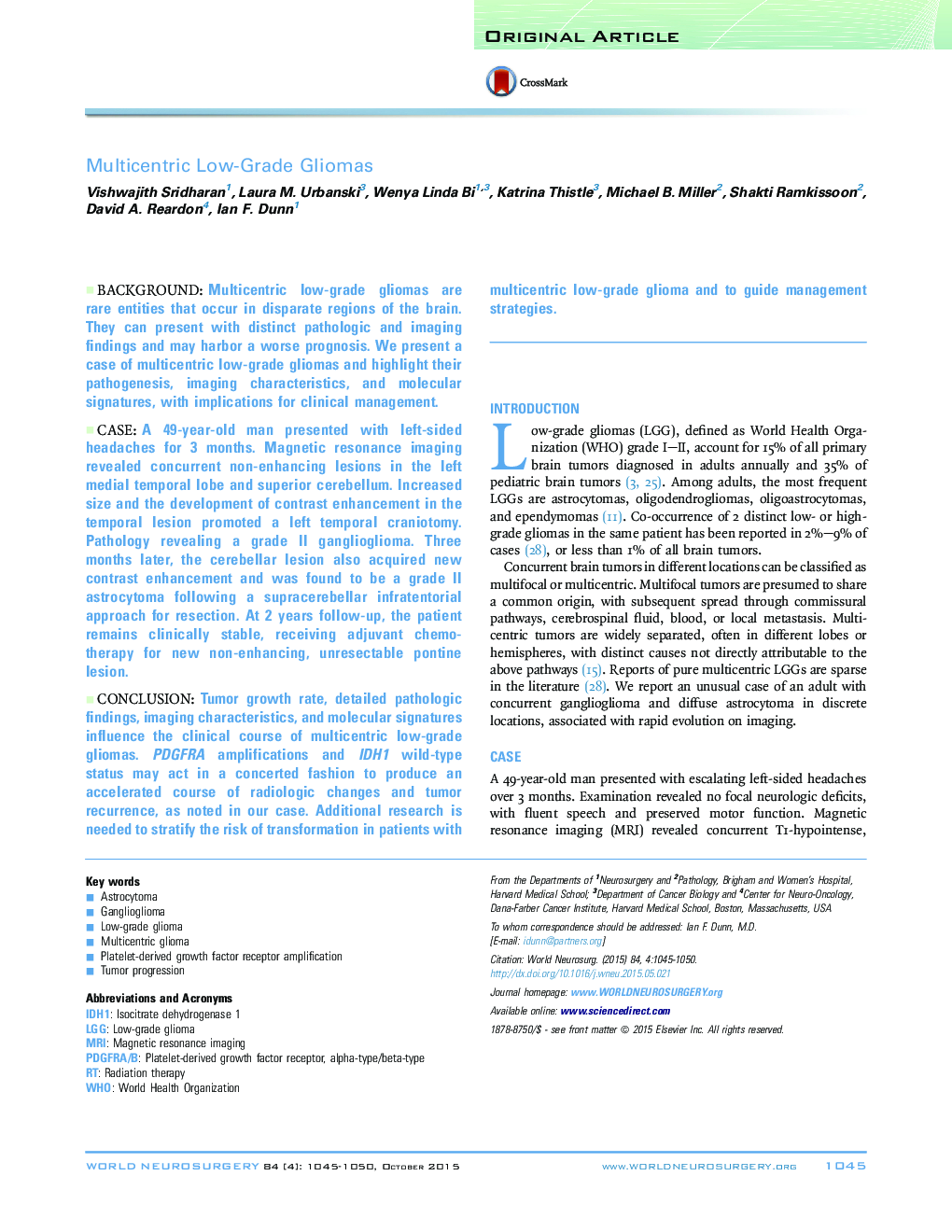| Article ID | Journal | Published Year | Pages | File Type |
|---|---|---|---|---|
| 6044900 | World Neurosurgery | 2015 | 6 Pages |
BackgroundMulticentric low-grade gliomas are rare entities that occur in disparate regions of the brain. They can present with distinct pathologic and imaging findings and may harbor a worse prognosis. We present a case of multicentric low-grade gliomas and highlight their pathogenesis, imaging characteristics, and molecular signatures, with implications for clinical management.CaseA 49-year-old man presented with left-sided headaches for 3 months. Magnetic resonance imaging revealed concurrent non-enhancing lesions in the left medial temporal lobe and superior cerebellum. Increased size and the development of contrast enhancement in the temporal lesion promoted a left temporal craniotomy. Pathology revealing a grade II ganglioglioma. Three months later, the cerebellar lesion also acquired new contrast enhancement and was found to be a grade II astrocytoma following a supracerebellar infratentorial approach for resection. At 2 years follow-up, the patient remains clinically stable, receiving adjuvant chemotherapy for new non-enhancing, unresectable pontine lesion.ConclusionTumor growth rate, detailed pathologic findings, imaging characteristics, and molecular signatures influence the clinical course of multicentric low-grade gliomas. PDGFRA amplifications and IDH1 wild-type status may act in a concerted fashion to produce an accelerated course of radiologic changes and tumor recurrence, as noted in our case. Additional research is needed to stratify the risk of transformation in patients with multicentric low-grade glioma and to guide management strategies.
